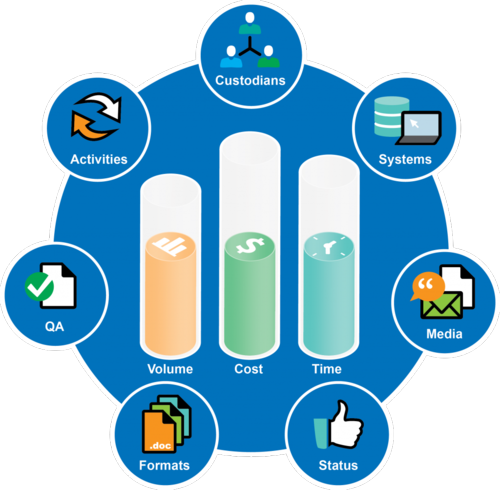Apple Wins Case, But Loses its Bid to Have Most of its Costs Covered – eDiscovery Case Law

In Ancora Technologies, Inc. v. Apple, Inc., (N.D. Cal. Aug. 26, 2013), California District Judge Yvonne Gonzalez Rogers granted in part and denied in part Ancora’s Motion for Review of Clerks’ Order on the Bill of Costs of prevailing party Apple, reducing the awarded amount from $111,158.23 down to $20,875.48, including disallowing over $71,000 in storage and hosting costs.
On May 13 of this year, after the court granted Apple summary judgment in the case, Apple filed with the Clerk of the Court a Bill of Costs seeking $116,366.87 in costs, including $94,400.71 for “fees exemplification and the costs of making copies.” On May 28, Ancora filed objections to that Bill of Costs. Ancora specifically objected to recovery of many of Apple’s fees based on the Supreme Court’s recent decision in Taniguchi v. Kan Pacific Saipan, Ltd, 132 S. Ct. 1997, 182 L. Ed. 2d 903 (2012), which had reversed the Ninth’s Circuit’s decisions reading the items of recoverable costs under Rule 54(d)(1) and Section 1920 broadly. On June 24, the Clerk of the Court issued an order awarding Apple $111,158.23, leading to the motion by Ancora discussed in this ruling.
In its motion, Ancora sought review of the Clerk’s Order on Apple’s Bill of Costs as to six categories of costs. Here are the categories and the judge’s ruling regarding each:
- Conversion of documents produced by Ancora in eDiscovery: As Judge Gonzalez noted, “Ancora produced many documents in a format that was not ‘text searchable’ and did not provide the associated load files or OCR data in a .TXT file format”, which was contrary to their own production format agreement. So, the judge denied the motion and upheld Apple’s request for $3,471.61 for conversion costs.
- Storage and hosting of electronic documents: Apple sought “online hosting costs for several hundred gigabytes (GB) of electronic document storage, though it only produced documents amounting to around 3.5 GB of data”. Finding that “Taniguchi did not directly address the issue of taxing e-discovery costs, it did establish the principle that section 1920 does not cover all costs that are necessarily incurred in litigation, but only a narrow subset”, Judge Gonzalez upheld Ancora’s motion and reduced Apple’s award by $71,611.52.
- “Custom work” and “replacement” costs for electronic documents: Apple claimed costs incurred for “replacing corrupted electronic documents and resolving technical issues during the processing of documents for production”, but Judge Gonzalez found no support or justification for the costs and reduced Apple’s award by $5,375.46.
- Printing of documents in connection with deposition preparation and Markman hearing: Finding that “Local Rule 54-3(d)(3) allows the ‘cost of reproducing disclosure of formal discovery documents when used for any purpose in the case’”, Judge Gonzalez upheld Apple’s request for $3,998.05 for those costs.
- Costs related to visual aids, including equipment rental and graphics services: Again, adopting the narrow interpretation of Taniguchi, Judge Gonzalez denied $13,097.75 of the $13,227.95 requested.
- Costs associated with deposition transcripts: With regard to deposition transcripts, because “Local Rule 54-3(c)(1) allows costs for an original and a copy”, Judge Gonzalez upheld Apple’s request for $4,891.95, which included a second copy.
So, what do you think? Were the correct decisions made regarding cost reimbursement? Please share any comments you might have or if you’d like to know more about a particular topic.
Disclaimer: The views represented herein are exclusively the views of the author, and do not necessarily represent the views held by CloudNine Discovery. eDiscoveryDaily is made available by CloudNine Discovery solely for educational purposes to provide general information about general eDiscovery principles and not to provide specific legal advice applicable to any particular circumstance. eDiscoveryDaily should not be used as a substitute for competent legal advice from a lawyer you have retained and who has agreed to represent you.





